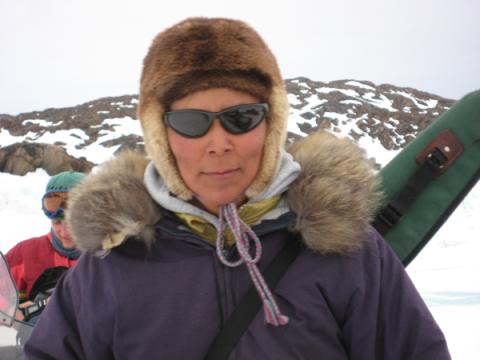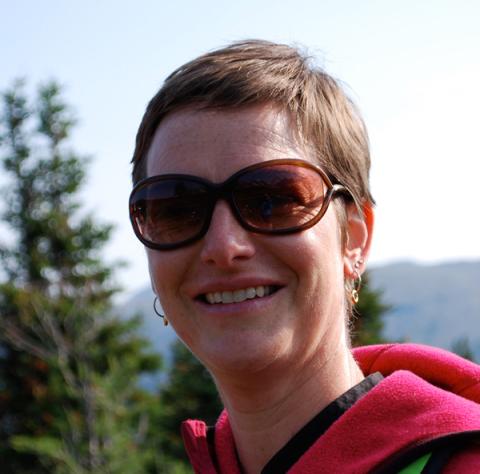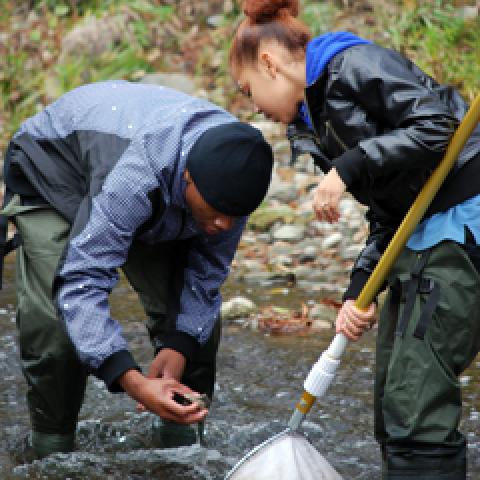
By tapping into a growing trend of online micro-giving, founder Ruth Richardson hopes to raise money across the country for grassroots initiatives that are sometimes overlooked by larger, more established charities.
“It’s a way of engaging citizen philanthropists, and getting critical seed capital into community organizations, small amounts that can make a real difference and help start something at a community level,” Richardson says.
While the big names in philanthropy do essential work, she explains, there tends to be a gap in funding for grassroots organizations. After nearly 20 years of working for organizations like the Canadian Environmental Grantmakers’ Network, the Laidlaw Foundation’s Children and Environmental Health program, and the Unilever Canada Foundation, Richardson wanted to do something to fill that gap.
It’s bottom-up philanthropy, she says. “Large foundations tend to be very strategic, which often means they provide larger amounts of money to fewer organizations, but there’s a lot of really important work happening at the grassroots level and unless some of that funding hits that level, we’re not going to be able to allow responses to big challenges to become entrenched locally and then move up.”
There are currently 30 projects up for consideration on SmallChangeFund.org, looking for between $1500 and $5000 to fulfill their goals. “We’re focused on micro grants, as are our international partners, the theory being that a small amount of money can go a long way,” says Richardson. “It’s the seed money to help them get started, or to fill a gap, or to allow them to do something discreet that they wouldn’t otherwise be able to do.” The focus on small, discreet projects also allows Small Change to keep its administrative costs low.
Although the organization casts a wide net with a relatively simple application process, potential projects are thoroughly vetted via a network of 22 advisors from across Canada — scientists and activists, leaders of small networks and coalitions, teachers, journalists, photographers, and environmentalists. More than just providing an additional layer of accountability, those advisors are integral to building the community Richardson and co-founder Mary McGrath envision. “They’re really our eyes and ears in the communities, a bridge to getting the word out about Small Change Fund, but also a means of drawing ideas and projects from the communities to us,” says Richardson.
Projects range in scope from environmental education initiatives, such as engaging youth in water monitoring in the Humber area, to a group attempting to start a Winnipeg, Manitoba-based environmental film festival, to a female hunter in Iqaluit whose focus is interviewing Native elders about traditional means of species management, with an eye to feeding that information to government organizations responsible for setting hunting quotas in the area.
This idea, the democratizing of philanthropy using the web, is extraordinarily compelling, Richardson says, referencing a recent TED talk by Katherine Fulton on the subject. “It’s transforming philanthropy as we watch it.”
While many of the initiatives currently up for consideration have deep environmental undercurrents, their collective reach extends beyond that, Richardson insists. “We define that very, very broadly. When we’re working with international communities, or in the north, social issues, economic issues, environmental issues aren’t really distinct.”
“We really wanted this to be about the people and about the organizations,” Richardson says. Unlike some other philanthropic marketplace sites, even if a project doesn’t meet its goal within the time it’s posted, the funds raised still go to where the donors intended. It’s an innovative, if experimental, approach.
“Many of the other online market places hold funds until the group meets their goal. If they don’t, they go back to the donor and say, ‘Redirect your money.’ My board and advisors didn’t like that. They said that if somebody’s chosen to give to a group, their donation should go to that group. We’re talking about small organizations that are so strapped for cash that any amount of money will be useful and helpful.”
Their reach is now limited to initiatives in Canada, but Small Change hopes to one day expand outside the country by partnering with international groups engaged in similar work.
“Take climate change,” Richardson says. “We can talk about it at a global level, then look at strategies for dealing with it through small grants in local communities. We can hook up our advisors so they can learn from each other, connect some of the groups that we’re funding and that they’re funding, so they can learn from each other. It will be interesting to see how it evolves.”
If you would like to donate or volunteer, go to the web site. “We could use assistance in a lot of areas, “ Richardson says. “Whatever skills people have, we’ll try to match them up with meaningful work.”
Unique Online Micro-Philanthropy Site Allows Grassroots Giving
* Samaritanmag.com is an online magazine covering the good deeds of individuals, charities and businesses.